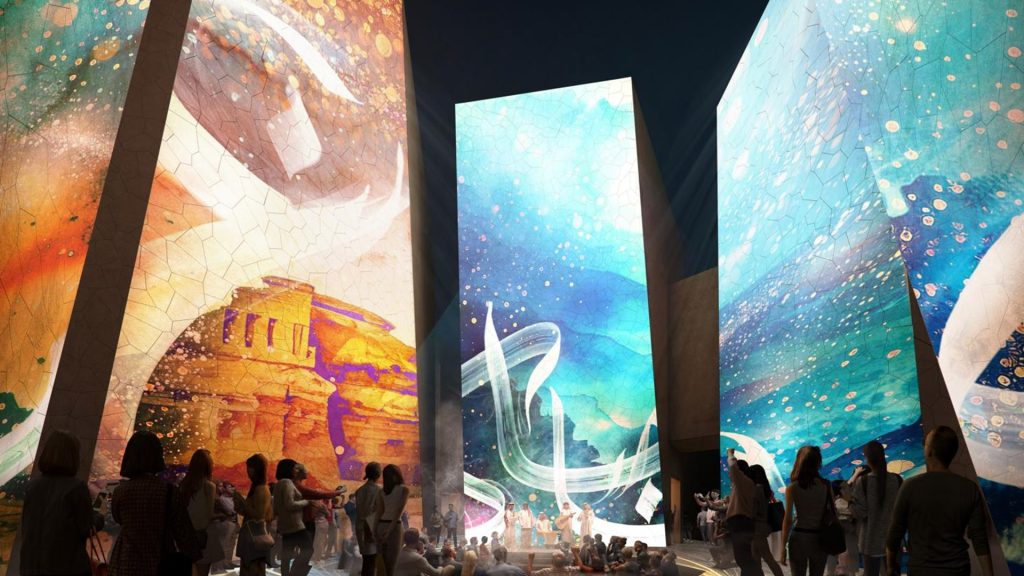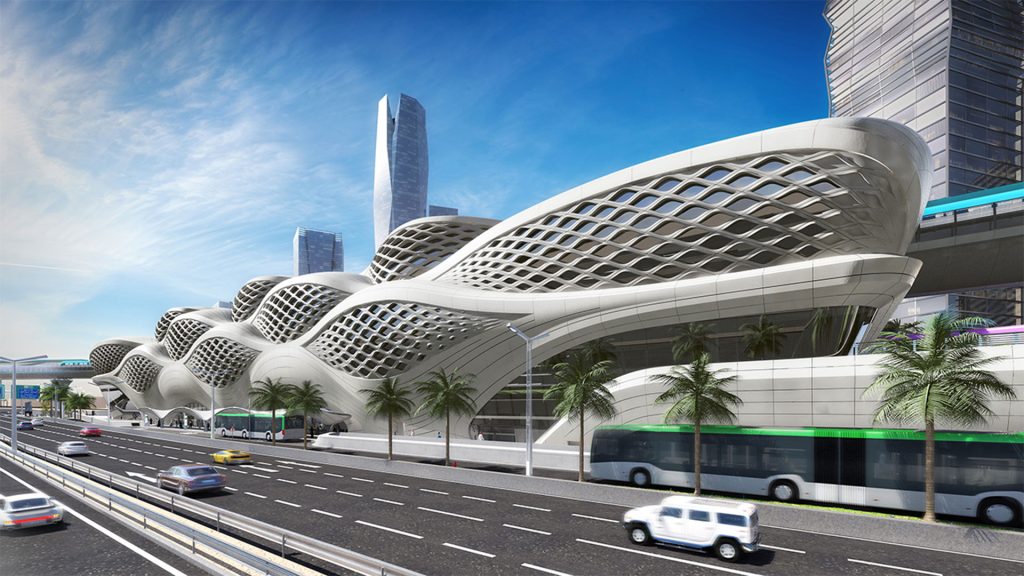Introduction
Discover the dynamic fusion of tradition and innovation as we delve into the captivating realm of Najdi architecture style and its profound impact on Saudi Arabia’s future. From historical roots to modern interpretations, explore how this is reshaping skylines, preserving heritage, and embracing sustainability for a vibrant tomorrow.
Table of Contents
Historical Roots and Cultural Legacy
Najdi architecture, rooted in the heart of Saudi Arabia, serves as a tangible link to the nation’s illustrious past, embodying centuries of cultural heritage and societal evolution. Its origins can be traced back to the Najd region, where the harsh desert environment necessitated ingenious architectural solutions that seamlessly blended functionality with aesthetics.
At its core, Najdi architecture style reflects the nomadic lifestyle of its inhabitants, characterized by a profound connection to the land and a keen understanding of local materials. Mud, clay, and timber were meticulously crafted into structures that provided shelter from the scorching sun and swirling sands, while intricate geometric patterns adorned facades, bearing witness to the region’s artistic prowess.
The architectural style also bears the imprint of Islamic influence, with mosques and palaces serving as focal points of community life and spiritual devotion. Elaborate courtyards, towering minarets, and intricately carved wooden screens exemplify the fusion of Islamic artistry with indigenous craftsmanship, creating spaces that are both sacred and serene.
As the region flourished and trade routes expanded, Najdi architecture evolved, incorporating influences from neighboring cultures while retaining its distinctive character. From the mud-brick fortresses of Diriyah to the ornate palaces of Riyadh, each structure tells a story of resilience, innovation, and cultural exchange.
Today, it continues to shape Saudi Arabia’s built environment, serving as a source of inspiration for architects and urban planners alike. Its enduring legacy reminds us of the rich tapestry of Saudi culture and the timeless beauty of a tradition that has stood the test of time.
Transformative Journey Along King Abdulaziz Road
The transformation of King Abdulaziz Road epitomizes Saudi Arabia’s commitment to blending tradition with modernity, with Najdi architecture style at the forefront of this evolution. Once a thoroughfare steeped in history, it is now undergoing a dynamic metamorphosis, symbolizing the nation’s aspirations for the future while preserving its cultural heritage.
Along this historic route, the skyline is being reshaped by a tapestry of architectural innovation that seamlessly integrates Najdi design elements with contemporary aesthetics. Traditional mud-brick structures stand alongside sleek glass facades, creating a harmonious juxtaposition of old and new. This blending of architectural styles not only revitalizes the urban landscape but also fosters a sense of continuity with the past.
At the heart of this transformation lies a reverence for Najdi architecture’s timeless appeal and cultural significance. Buildings adorned with intricate geometric patterns pay homage to the region’s artistic heritage, while modern amenities and sustainable features ensure their relevance in the 21st century. This thoughtful synthesis of tradition and modernity reflects Saudi Arabia’s desire to embrace its heritage while embracing the opportunities of the present.
Moreover, the revitalization of King Abdulaziz Road serves as a catalyst for economic growth and urban development, attracting investment and tourism to the region. As iconic landmarks rise against the skyline, they not only reshape the physical landscape but also redefine Saudi Arabia’s cultural identity on the global stage.
Preservation Initiatives: Safeguarding Heritage
The preservation of Najdi architectural treasures stands as a testament to the Kingdom’s unwavering commitment to safeguarding its rich cultural heritage. Nowhere is this dedication more evident than in the restoration projects undertaken in Diriyah and Al-Ula, two historic sites that serve as pillars of Najdi architectural legacy.
In Diriyah, the birthplace of the first Saudi state and a UNESCO World Heritage Site, meticulous restoration efforts have breathed new life into the mud-brick structures that once adorned its streets. Through painstaking research and craftsmanship, historic buildings such as the Salwa Palace and the Turaif district have been lovingly restored to their former glory, preserving their unique architectural features and cultural significance for future generations to admire.
Similarly, in Al-Ula, home to the ancient Nabatean city of Hegra, restoration projects have transformed dilapidated ruins into vibrant cultural hubs. The Al-Ula Royal Commission has spearheaded efforts to preserve and protect the region’s architectural treasures, including the iconic Elephant Rock and the awe-inspiring Madain Saleh archaeological site. By combining modern conservation techniques with traditional craftsmanship, these projects have not only revived Al-Ula’s architectural splendor but also revitalized local communities and stimulated tourism.
These restoration projects serve as shining examples of Saudi Arabia’s commitment to heritage conservation, demonstrating the value placed on preserving the country’s architectural legacy for future generations. Through their efforts, Diriyah and Al-Ula have emerged as beacons of Najdi culture, offering visitors a glimpse into the rich history and timeless beauty of the Kingdom’s architectural heritage.
Contemporary Interpretations: Blending Past and Present
Modern architects have undertaken the task of reinterpreting Najdi architectural themes, infusing contemporary structures along King Abdulaziz Road with elements that seamlessly blend tradition with functionality and aesthetics. These architectural reinterpretations serve as a bridge between the past and the present, honoring Najdi heritage while embracing the demands of modern living.
One prominent feature of these reinterpretations is the incorporation of traditional geometric patterns and motifs into the design of modern buildings. Facades adorned with intricate latticework and ornate detailing pay homage to Najdi craftsmanship, creating visually stunning compositions that captivate the eye and evoke a sense of cultural continuity.
Moreover, modern architects are leveraging advancements in technology and construction techniques to imbue Najdi-inspired structures with contemporary functionality. Sustainable materials and energy-efficient design principles are integrated into the fabric of these buildings, ensuring they meet the needs of a rapidly evolving society while minimizing their environmental footprint.
Furthermore, the layout and spatial organization of these modern structures often draw inspiration from traditional Najdi architecture style, with courtyards, shaded walkways, and open-air gathering spaces serving as focal points of community interaction. By embracing these time-honored principles of architectural design, modern architects are creating spaces that are not only visually striking but also conducive to human well-being and social cohesion.
Sustainability as a Guiding Principle
Sustainability has become a central focus within Najdi architecture, especially along King Abdulaziz Road, where the integration of eco-friendly principles is reshaping the architectural landscape towards a more resilient and environmentally conscious future. Embracing sustainable practices not only addresses contemporary environmental challenges but also honors the Najdi tradition of harmonizing with the natural surroundings.
One key aspect of sustainable Najdi architecture is the use of locally sourced materials, such as mud, clay, and timber, which not only reduce carbon emissions associated with transportation but also promote economic development within the community. By utilizing indigenous materials, architects are able to create structures that blend seamlessly with the surrounding environment while minimizing their ecological footprint.
Additionally, modern Najdi buildings along King Abdulaziz Road incorporate energy-efficient design features, such as passive cooling systems, natural ventilation, and solar panels, to reduce reliance on fossil fuels and minimize energy consumption. These innovative technologies not only lower operational costs but also contribute to a healthier indoor environment for occupants.
Furthermore, water conservation plays a crucial role in sustainable Najdi architecture style, with features like rainwater harvesting systems, greywater recycling, and drought-resistant landscaping helping to preserve this precious resource in arid climates. By implementing these water-saving measures, architects are able to create landscapes that are both aesthetically pleasing and environmentally responsible.
Iconic Landmarks: Fusion of Heritage and Modernity
The Abraj Al-Bait Clock Tower stands as a towering testament to the fusion of Najdi tradition with cutting-edge modern architecture, serving not only as a functional landmark but also as a symbol of cultural pride for Saudi Arabia. Rising majestically above the skyline of Mecca, this iconic structure seamlessly integrates elements of Najdi architectural heritage with state-of-the-art design principles, embodying the nation’s rich cultural legacy while embracing the technological advancements of the 21st century.
At its core, the clock tower pays homage to Najdi architectural traditions through its elegant proportions, intricate detailing, and timeless aesthetic. The use of traditional Islamic motifs, such as geometric patterns and calligraphic inscriptions, adorns the façade of the tower, reflecting the region’s artistic heritage and spiritual significance. Moreover, the incorporation of local materials, including marble, granite, and gold leaf, further reinforces its connection to the Najdi cultural landscape, creating a sense of authenticity and continuity with the past.
However, the Abraj Al-Bait Clock Tower is not merely a tribute to tradition; it also represents a bold vision for the future of Saudi Arabia. With its innovative design features, including a high-tech observation deck, luxury accommodations, and a massive clock face illuminated by LED lights, the tower stands as a beacon of progress and modernity in the heart of Mecca. As such, it serves as a source of national pride and a symbol of Saudi Arabia’s commitment to architectural excellence and cultural preservation on the global stage.
Global Impact and Future Prospects
Saudi Arabia’s global influence in architecture is palpable through ambitious projects like the Jeddah Tower and the NEOM project, which not only redefine the nation’s skyline but also set new benchmarks on the global stage. These initiatives exemplify the Kingdom’s commitment to pushing the boundaries of architectural innovation while showcasing the enduring legacy of Najdi architecture style to the world.
The Jeddah Tower, set to become the tallest building in the world upon completion, symbolizes Saudi Arabia’s aspirations for economic growth and urban development. Designed by renowned architect Adrian Smith, the tower’s sleek and futuristic design reflects the nation’s vision for a modern and progressive society. As a towering feat of engineering, the Jeddah Tower serves as a symbol of Saudi Arabia’s ambition and determination to leave a lasting mark on the global architectural landscape.
Similarly, the NEOM project represents a bold vision for the future of urban living, blending cutting-edge technology with sustainable design principles to create a truly futuristic city. As the crown jewel of Saudi Arabia’s development initiatives, NEOM showcases the nation’s commitment to innovation and sustainability, setting a new standard for smart cities worldwide. With its emphasis on renewable energy, advanced infrastructure, and eco-friendly transportation systems, NEOM represents a paradigm shift in urban planning and development, positioning the Kingdom as a global leader in sustainable architecture and innovation.
Conclusion
In conclusion, Najdi Architecture style stands as a beacon of Saudi Arabia’s rich heritage and visionary future. Through its blend of tradition, modernity, and sustainability, it not only shapes skylines but also inspires a global dialogue on architectural innovation. It’s a testament to the enduring legacy of culture meeting progress.



